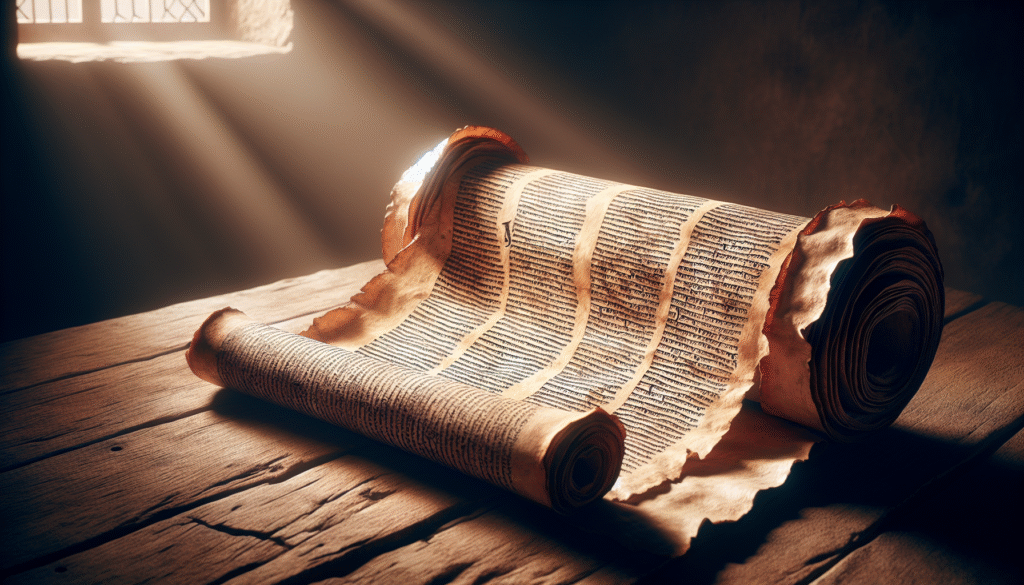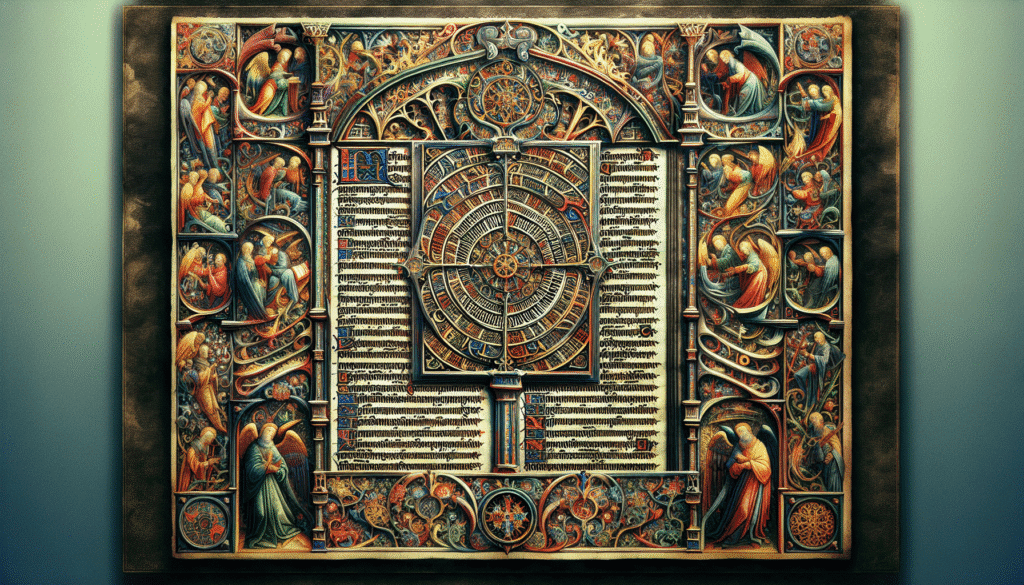Have you ever thought about how ancient texts, especially the Bible, have withstood the test of time despite the passage of centuries and countless translations? Understanding and reconstructing original biblical manuscripts is a fascinating journey that intertwines history, theology, and textual criticism. Church Fathers, influential theologians and writers from the first several centuries AD, play a significant role in this reconstruction endeavor. By examining their writings, scholars piece together echoes of past texts, aiding in the rediscovery of original manuscripts.
As an author with extensive experience in theological studies and manuscript research, I often find myself immersed in ancient libraries and archives. With a PhD in Theology, focusing on the reconstruction of ancient texts, I aim to unravel the mystery of how Church Fathers contribute to our understanding of early Christian manuscripts. In 2025, this study becomes even more vital. It offers us insights into the authenticity of religious texts, enriching both our spiritual and historical knowledge.
TL;DR
Church Fathers are crucial in reconstructing the original biblical manuscripts, providing valuable insights into early Christian writings. Their works serve as textual witnesses, offering glimpses of scriptures from antiquity. This guide explores the significant role of Church Fathers through their citations, theology, and influence, shedding light on the methods and reliability of textual criticism in the digital age.

Understanding the Role of Church Fathers
Who Were the Church Fathers?
At the heart of ancient Christian scholarship lie the Church Fathers. But who were they, really? The Church Fathers were early Christian writers and theologians whose writings significantly impacted the development of Christian doctrine and practice. They lived primarily between the first and eighth centuries. Esteemed figures like Augustine of Hippo, Athanasius of Alexandria, and John Chrysostom are among them. Their writings not only shaped theological discourse but also serve as historical anchors, marking the evolution of Christian thought.
How Their Works Serve as Textual Witnesses
Many Church Fathers frequently quoted and referenced biblical texts in their works. These citations are invaluable to scholars because they help verify and reconstruct biblical manuscripts. When you skim through a text by Origen or Tertullian, for instance, you encounter numerous biblical references and interpretations. This extensive quoting acts like a window into the version of the biblical text that existed in their time, enabling scholars to cross-reference these with existing manuscripts.
The Relevance of Textual Criticism
Textual criticism is the study of manuscripts to determine their original wording. It involves comparing different manuscript copies, analyzing variants, and evaluating their authenticity and reliability. In today’s scholarly realm, textual criticism remains vital, ensuring that religious texts remain as close to their original form as possible. The Church Fathers’ writings thus become crucial pieces of this puzzle, offering contextual layers and historical testimony that support the reconstruction of original texts.
How Church Fathers Quoted Scripture
Patterns in Biblical Citations
Have you ever noticed how certain figures in history have particular styles? Church Fathers often quoted the Bible extensively, but each had a unique style and focus in their citations. For example, someone like Augustine might focus on moral teachings, while Origen delves into allegorical interpretations. Understanding these patterns helps scholars discern not only what text was used but also how it was understood in their time.
Comparisons with Existing Manuscripts
Wouldn’t it be fascinating to discover how many manuscripts echo the citations of Church Fathers? Scholars often compare the quotations found in the Church Fathers’ writings with existing biblical manuscripts to identify textual variants and discrepancies. This comparison allows for a deeper understanding of how texts evolved and which versions might mirror the early church’s beliefs more closely.
Aiding in Error Detection
Errors happen, even in sacred texts. But how are these errors detected and corrected? Church Fathers’ quotations serve as a benchmark, enabling scholars to detect and correct mistakes or interpolations in later manuscript copies. Inconsistencies can often be traced back and corrected, ensuring the closest representation of original texts.

The Influence of Theology on Textual Understanding
Hermeneutics and Interpretation
Hermeneutics—the theory and methodology of interpretation—plays a pivotal role in understanding ancient texts. The Church Fathers, through their rich theological discourses, provide early examples of biblical hermeneutics. They approached scripture not only as literature but as a divine message that needed contextual understanding and interpretation based on the spiritual needs of their communities.
Theological Trends and Textual Variation
How does theology impact textual variation? The theology propagated by these early figures often influenced how scriptures were copied and understood. If a particular doctrine was emphasized at a council or in a church community, it might reflect in the way biblical texts were transcribed or interpreted. Understanding the theological climate of the time aids scholars in discerning why certain textual changes might have been embraced.
Case Studies: Key Debates and Their Textual Impact
Historical debates provide context for textual nuances. For example, the Arian controversy, a significant theological dispute in the fourth century, revolved around the nature of Christ. This debate influenced how certain biblical texts were understood and cited, leaving its mark on manuscript traditions. Analyzing such case studies offers a richer perspective on doctrinal developments over time.
Modern Methods in Manuscript Analysis
The Role of Technology
Imagine using technology to examine an ancient scroll without touching it. The digital revolution has transformed manuscript studies, allowing scholars to analyze and compare texts using advanced software. Digital images, ultraviolet lighting, and spectral imaging reveal hidden texts and features, making it possible to study documents in ways never before possible.
Collaboration and Scholarly Networks
The case for teamwork is clear in manuscript studies. Global collaboration among scholars, institutions, and databases has revolutionized the study of ancient texts. By pooling resources, expertise, and findings, scholars are better equipped to tackle complex textual problems and enhance the reconstruction of original texts.
The Evolution of Scriptural Reconstruction
As technology and scholarship advance, so do methodologies in manuscript analysis. New discoveries and techniques continually redefine our understanding of early Christian manuscripts. The continuous evolution of these processes ensures that our pursuit of textual truth remains dynamic and progressive.
Challenges and Limitations
The Manuscript Gap
Despite advancements, the manuscript gap poses a significant challenge. Many original manuscripts have not survived their historical journey. The Church Fathers’ citations and references become indispensable tools, bridging these gaps by echoing texts that might otherwise be lost.
Subjectivity in Interpretation
Can personal bias influence textual study? The interpretation of ancient texts can sometimes be swayed by personal or contemporary biases. Scholars must remain vigilant, ensuring that their analyses and conclusions are objective and accurately reflect historical contexts, rather than contemporary theories or preferences.
Balancing Faith and Historical Accuracy
Such studies often tread the fine line between religious belief and historical curiosity. While some may approach scriptural reconstruction with devotion, others prioritize academic rigor. Finding balance ensures that faith-based perspectives and historical scholarship coexist and enrich one another.
FAQ Section
What is the significance of Church Fathers in textual reconstruction?
Church Fathers’ writings help verify and reconstruct original biblical manuscripts by providing historical citations and theological insights, bridging gaps between existing copies and lost originals.
How reliable are the writings of Church Fathers?
While informative, the reliability of Church Fathers’ writings depends on factors like historical context, theological agenda, and manuscript accuracy.
Can technology fully replace traditional manuscript study?
Technology complements but does not replace traditional study, enhancing analysis through digital imaging and aiding collaboration among scholars.
What are common challenges in manuscript reconstruction?
Common challenges include limited availability of early manuscripts, dealing with textual variants, and the potential influence of subjective interpretations.
How do Church Fathers’ citations compare with modern texts?
Scholars compare Church Fathers’ citations with modern texts, aiding in identifying textual stability and variations over centuries.
People Also Ask
How did Church Fathers influence Christian doctrine?
They shaped key theological concepts and interpreted scripture, informing Christian doctrine over centuries.
Why study Church Fathers today?
Studying Church Fathers enriches understanding of early Christianity, enhances textual critiquing, and informs contemporary theological discourse.
How do scholars use Church Fathers’ writings?
Scholars analyze citations for textual criticism, theological context, and historical insight into early Christianity.
What other sources aid in reconstructing biblical texts?
Besides Church Fathers, sources include ancient manuscripts, translations, and archaeological discoveries.
How does textual criticism impact modern biblical studies?
Textual criticism ensures accuracy in scriptural understanding, preserving textual integrity across translations and time.
In conclusion, Church Fathers contribute significantly to the reconstruction of original biblical texts. Their writings serve as a bridge across centuries, enriching our understanding of scriptural history. By melding theology and scholarship, these early theologians continue to guide us in unraveling the complexities of ancient texts. As we advance in technology and methodology, the dialogue between the past and present opens new avenues for exploring the sacred manuscripts that shape our spiritual and intellectual heritage.



